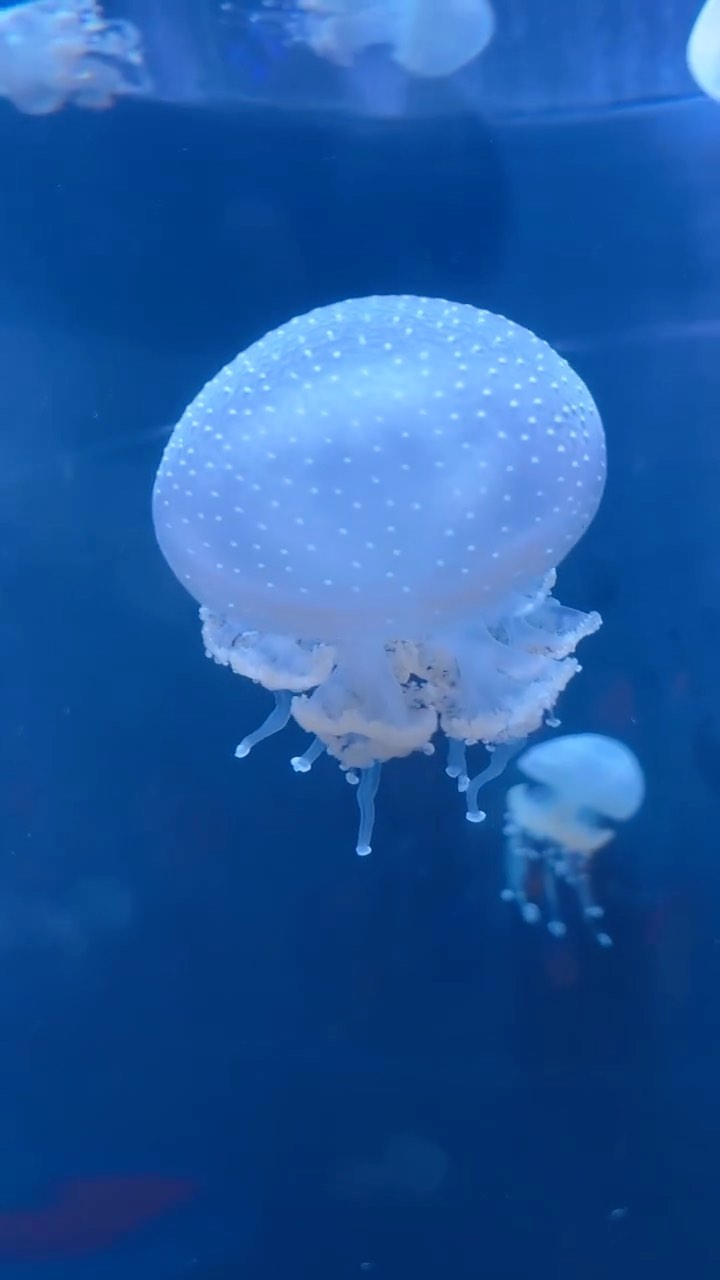- The evolutionary journey and survival adaptations of Jellies
- Detailed look at Australian spotted jellies and their habitat
- The role of aquarium exhibits like the Spineless exhibit in education and conservation
- Challenges in jellyfish management and conservation efforts
Jellyfish are among the most ancient and fascinating marine creatures, gracing the Earth’s oceans for over 500 million years. Despite their simple anatomical structure, consisting of a gelatinous umbrella-shaped bell and trailing tentacles, they have thrived through eons, predating the dinosaurs. The Australian spotted jelly is one such species that exhibits a remarkable example of natural beauty and resilience.
Native to the warm, tropical waters of the western Pacific Ocean, Australian spotted jellies, also known as phyllorhiza punctata, are a visual delight. Their translucent bells, dotted with white spots and accompanied by a gentle, pulsating movement, create a hypnotic display that has captivated the attention of marine biologists and aquatic enthusiasts alike. Their mesmerizing locomotion results from their bell’s coordinated contractions, propelling them through the water and serving as a method for both travel and feeding.
As filter feeders, these jellies sweep through the water, capturing plankton and small fish with their mucous-covered oral arms—a different approach from the stinging capture technique used by other jelly species. Survival in the vast oceans requires innovative feeding strategies, reflecting the adaptability that has enabled jellyfish to persist through the millennia.
Aquarium exhibits like the Spineless exhibit are pivotal in showcasing these extraordinary mariners. By providing a safe and controlled environment that simulates their natural habitat, institutions can educate the public about the ecological importance of jellies and the broader underwater ecosystems they inhabit. The Spineless exhibit brings people closer to a world they might never experience and shines a light on the delicate nature of marine ecosystems and the importance of their conservation.
Behind the serene ballet of the Australian spotted jellies in such exhibits lies a wealth of scientific research and precise habitat maintenance. Jellyfish are particularly sensitive to water quality, temperature, and flow, necessitating meticulous attention to detail by aquarium staff. This includes maintaining optimal salinity levels, managing filtration systems to mimic natural currents, and ensuring the provision of appropriate diets. These efforts help create an environment where these creatures survive and thrive, offering visitors a glimpse into their underwater lives.
Moreover, displaying jellies in controlled spaces like the Spineless exhibit can function as a research facility, where scientists can observe behaviors, breeding practices, and physiological responses in settings that are not easily accessible in the wild. This knowledge contributes significantly to understanding jellyfish and can aid in developing conservation strategies to protect their populations in natural habitats.
Despite their resilience, jelly populations face threats from human activities. Overfishing, pollution, and climate change can disrupt the delicate balance of their ecosystems. In some cases, via mechanisms not fully understood, these disturbances have led to jellyfish blooms, wherein their numbers increase dramatically. While this might seem like a boon for jelly survival, these blooms can negatively impact local marine life and industries, such as clogging fishing nets and cooling intakes for power plants.
Conservation efforts for jellyfish and their habitats are complex, requiring collaborative approaches encompassing policy changes, research funding, and public education. Organizations and aquariums that manage jellyfish populations work tirelessly to simulate conditions that remain as close to their natural environments as possible, striving to foster public interest and advocate for protecting marine biodiversity.
Observing Australian spotted jellies in a facility like the Spineless exhibit draws attention to these broader marine conservation issues. By captivating audiences with the serene dance of these aquatic creatures, these institutions serve as a vital bridge between public perception and scientific understanding. They remind us of our connection to our planet’s vast, blue depths and our shared responsibility to safeguard its inhabitants.
In conclusion, as we begin a new week, glancing at the enthralling video of Australian spotted jellies provides more than a moment of tranquility; it symbolizes the enduring legacy of jellyfish in our oceans and the concerted efforts to conserve their species for future generations. This peaceful encounter is a testament to the harmony achieved when scientific insight and conservation join forces, preserving the magic of marine life for all to experience. The journey of the Australian spotted jelly, from its ancient beginnings to its current portrayal in exhibits worldwide, serves as a beacon of resilience and beauty—an inspiration to propel ourselves into continued and proactive stewardship of the natural world.
*****
Source Description
Propel yourself into the week with this mesmerizing video of our Australian spotted jellies.
Jellies have roamed the ocean for over 500 million years. Before there were dinosaurs, there were jellies! In the wild, this speckled beauty can be found in the tropical waters of the western Pacific Ocean. Come visit them today in the Spineless exhibit!

